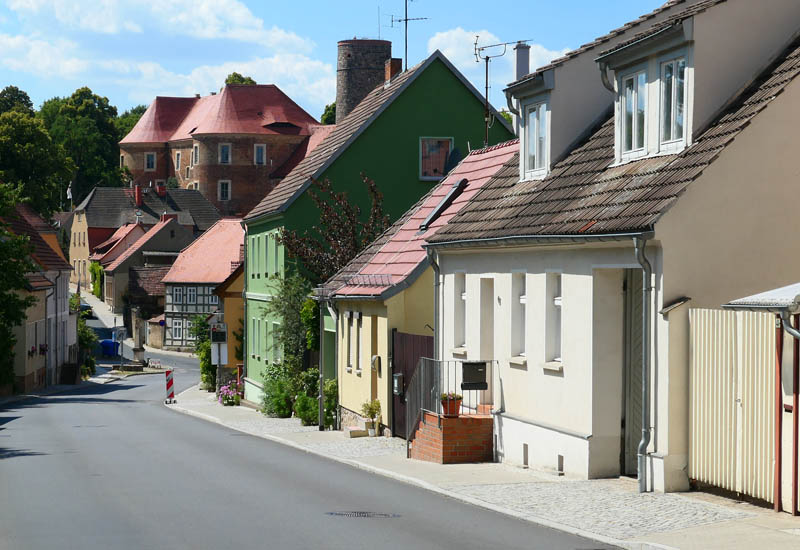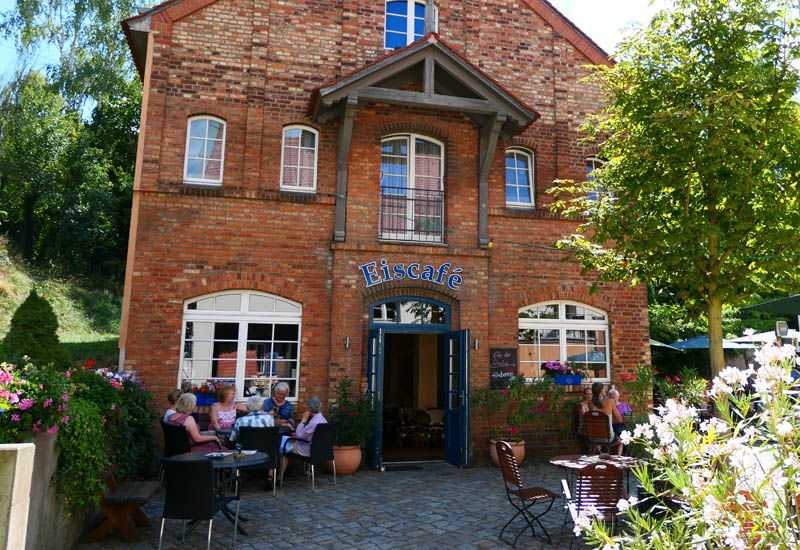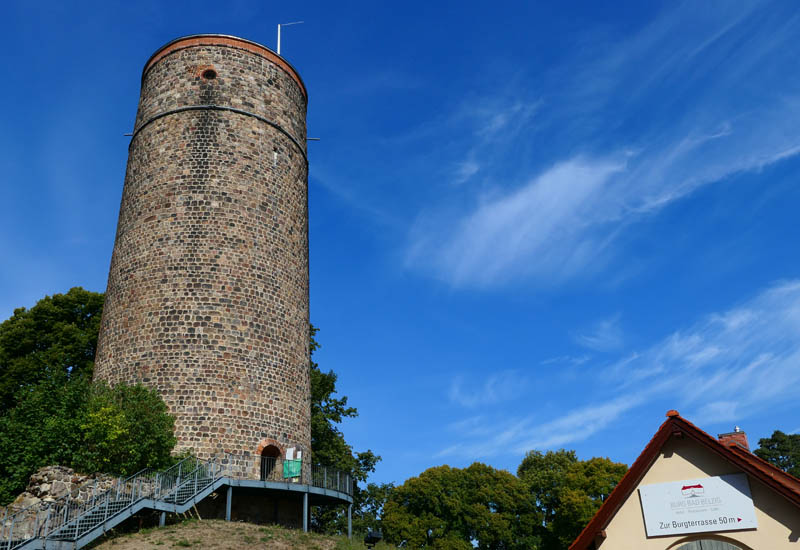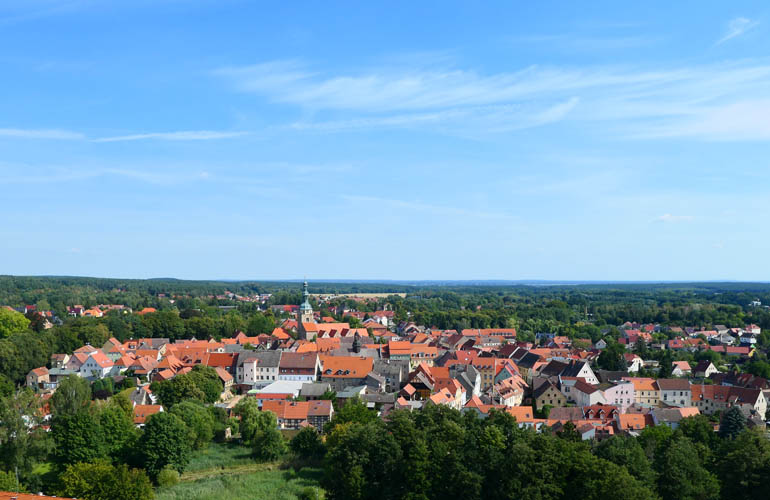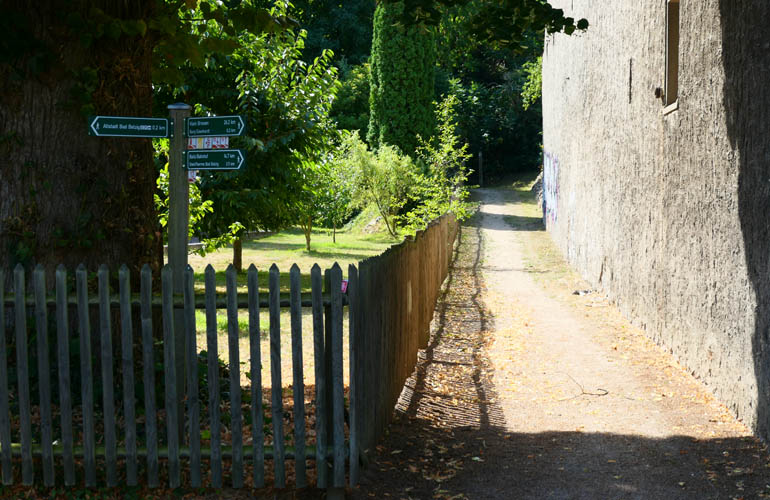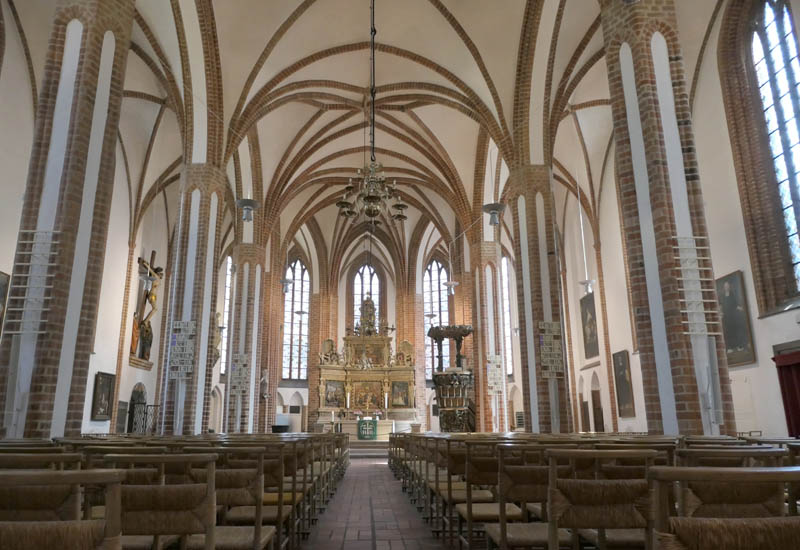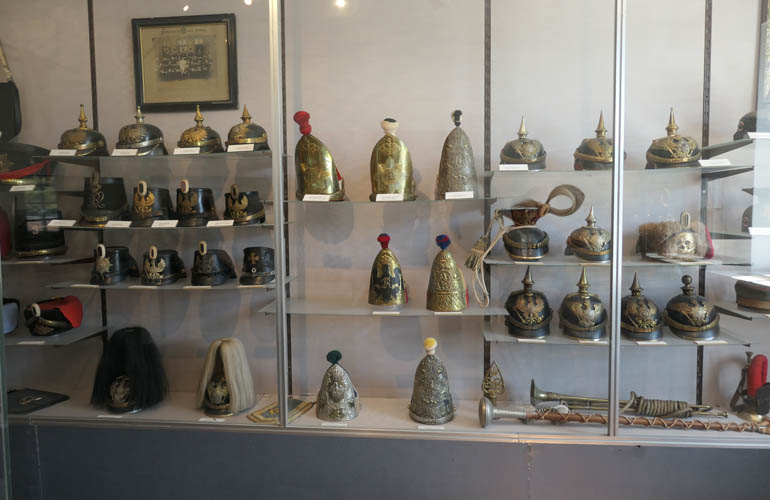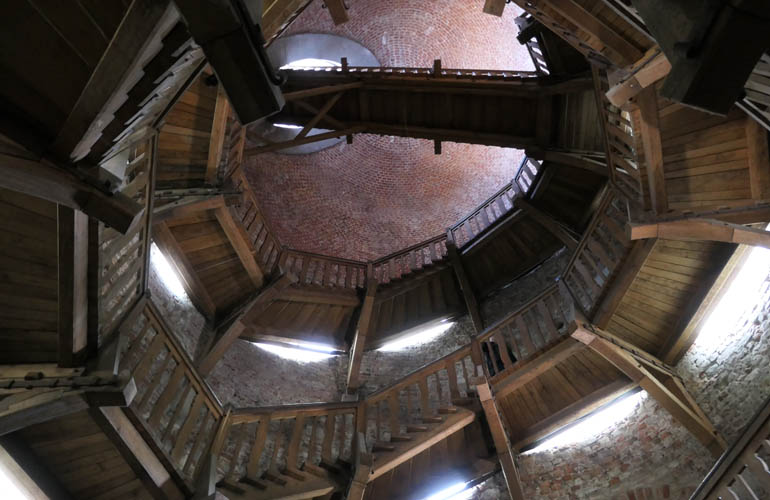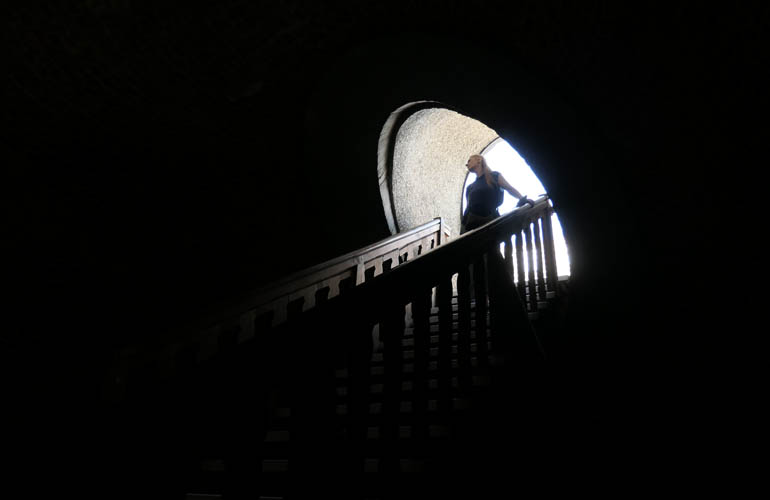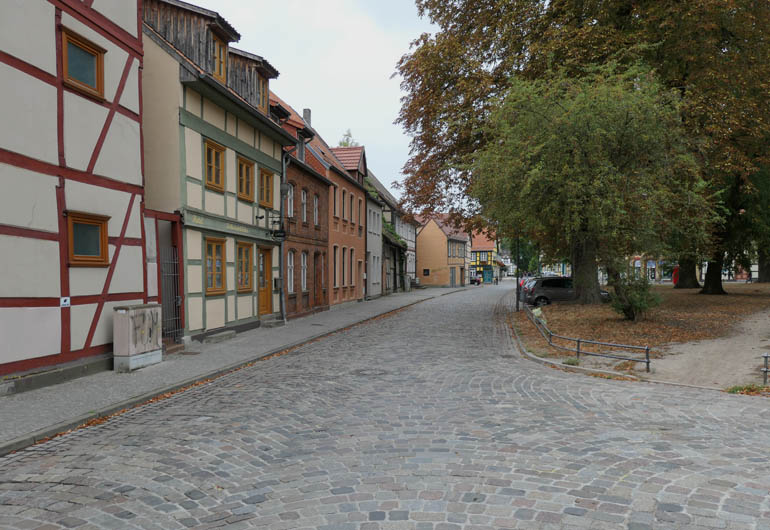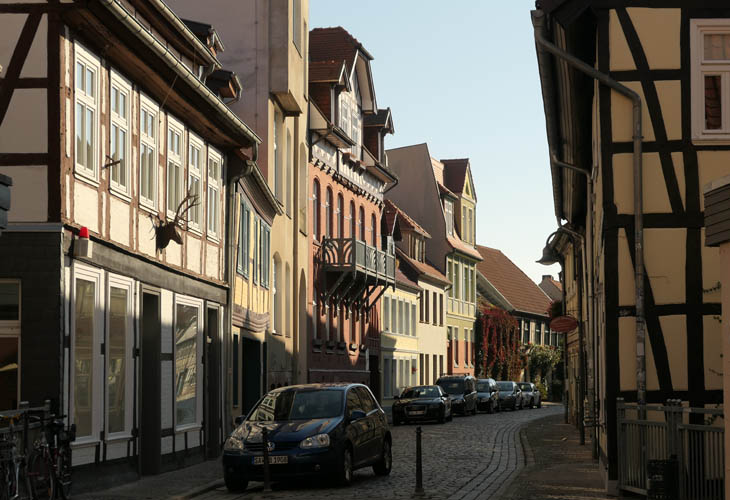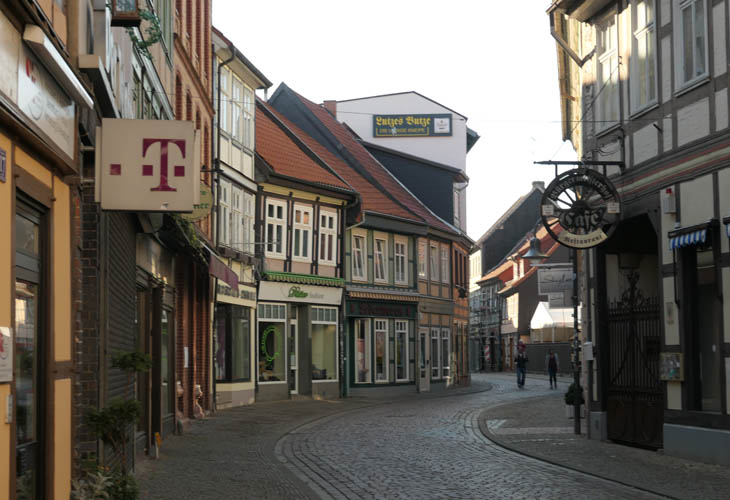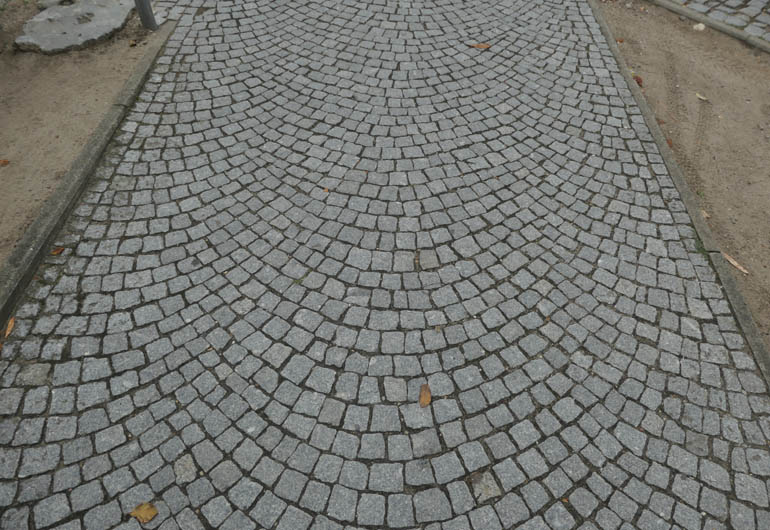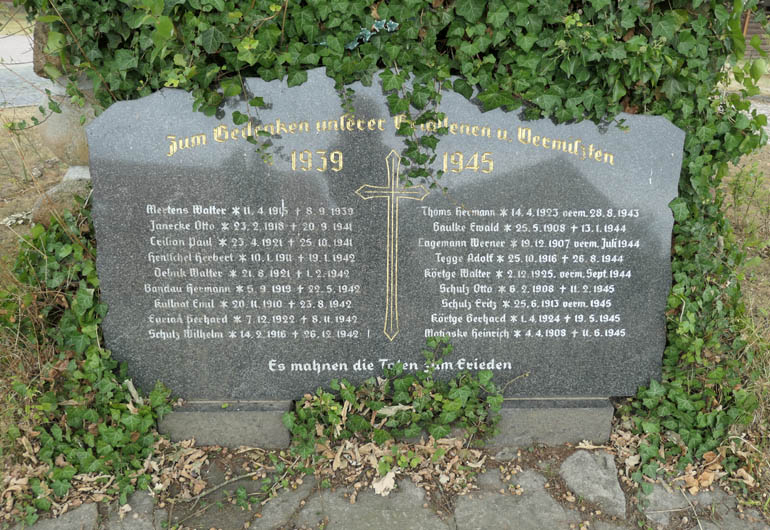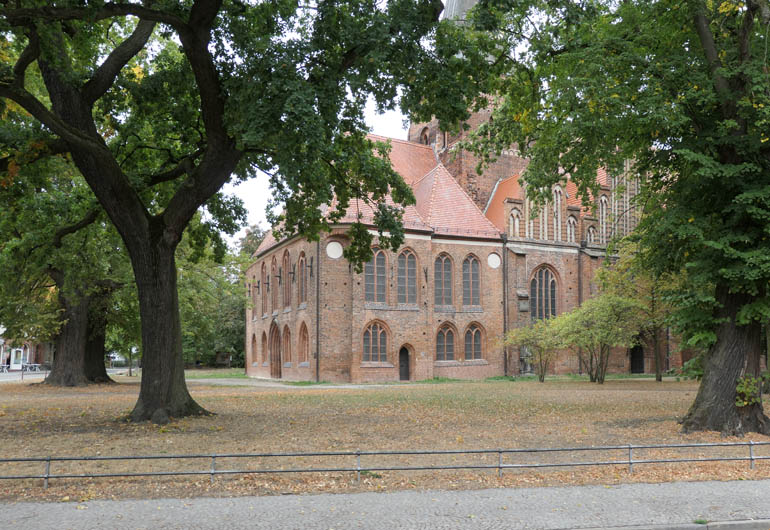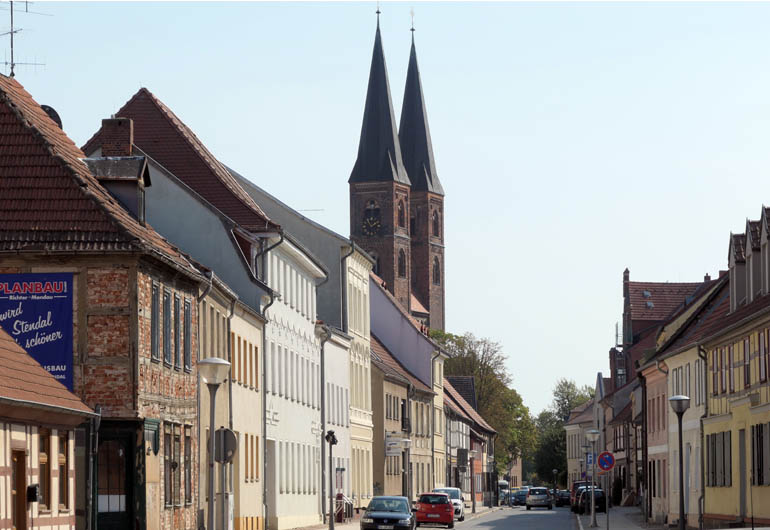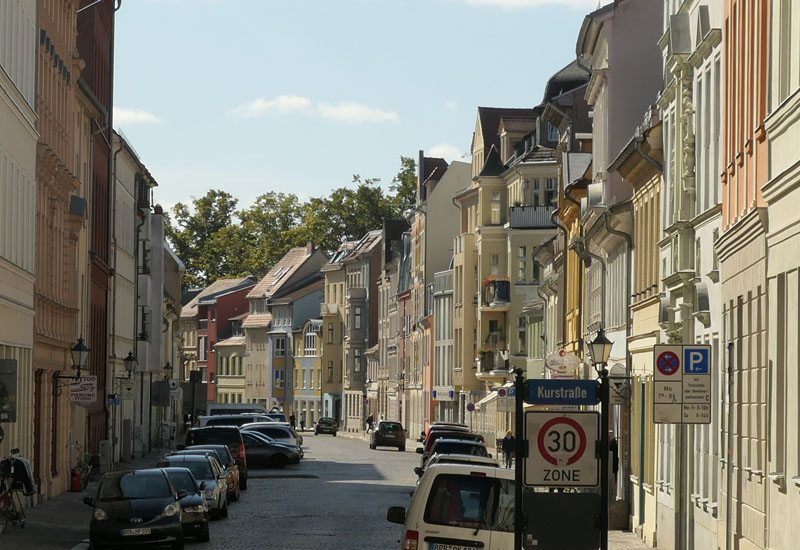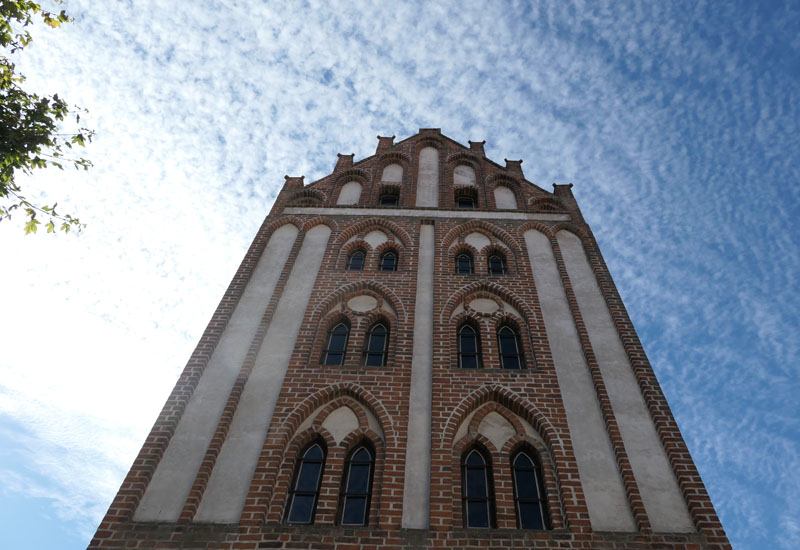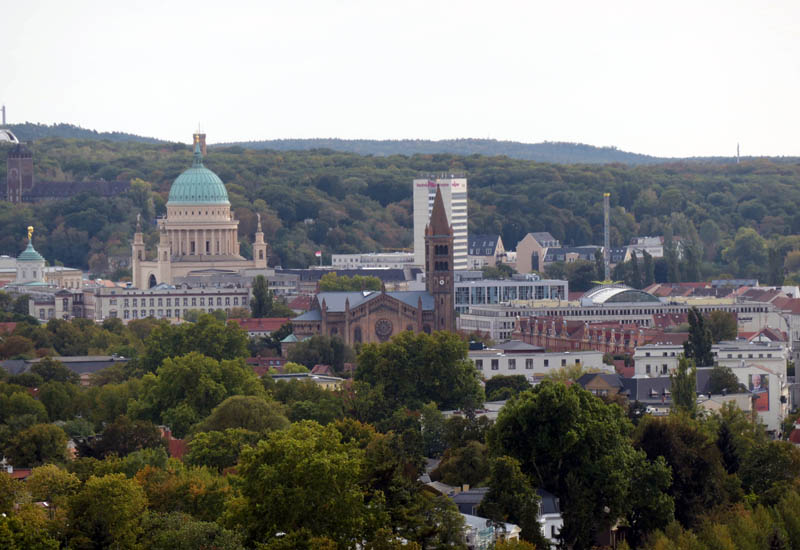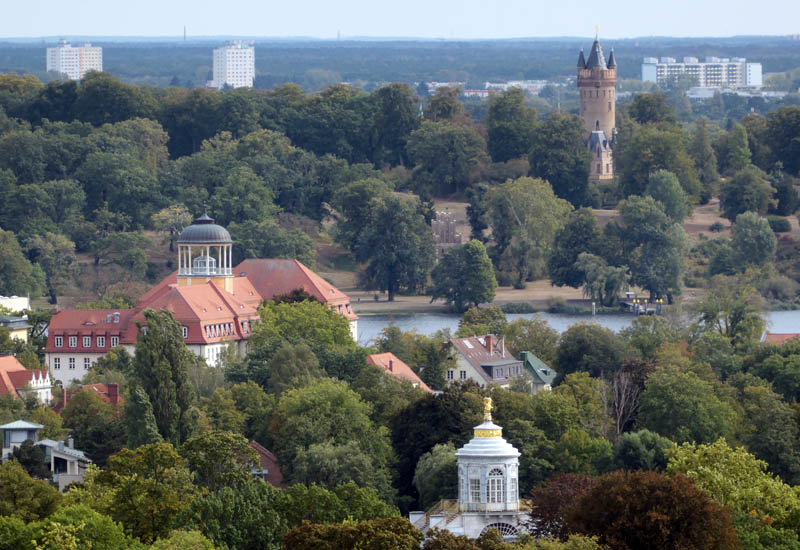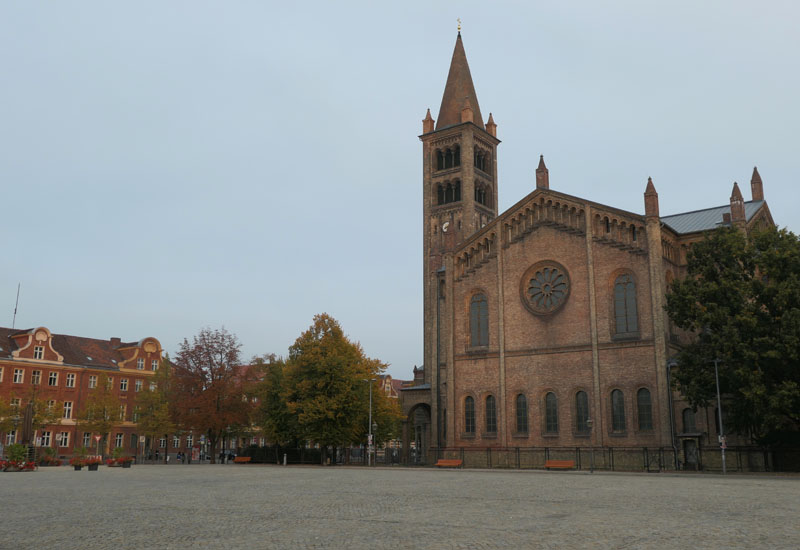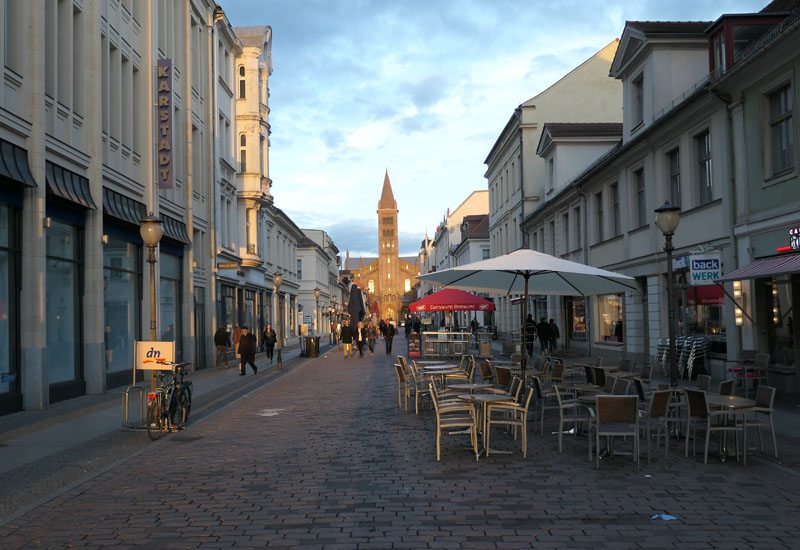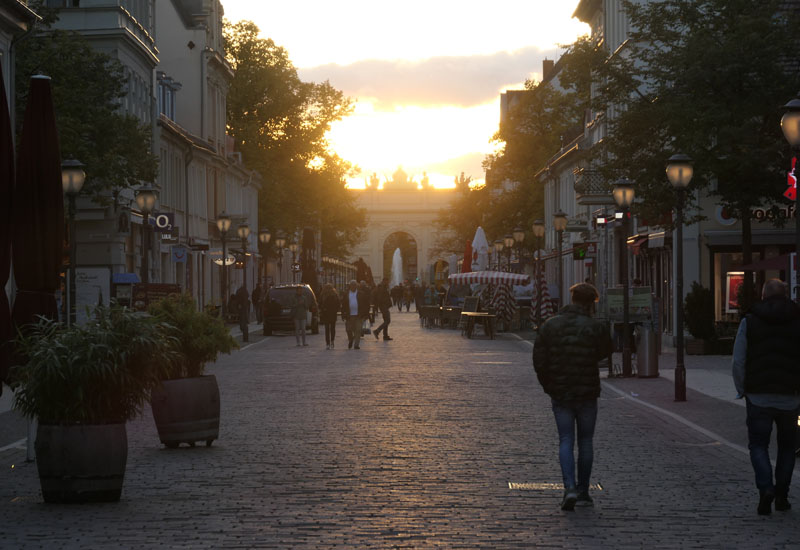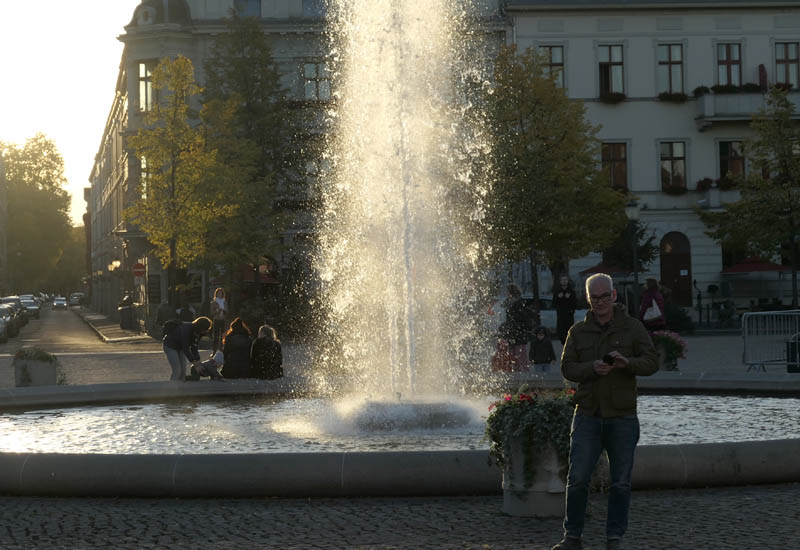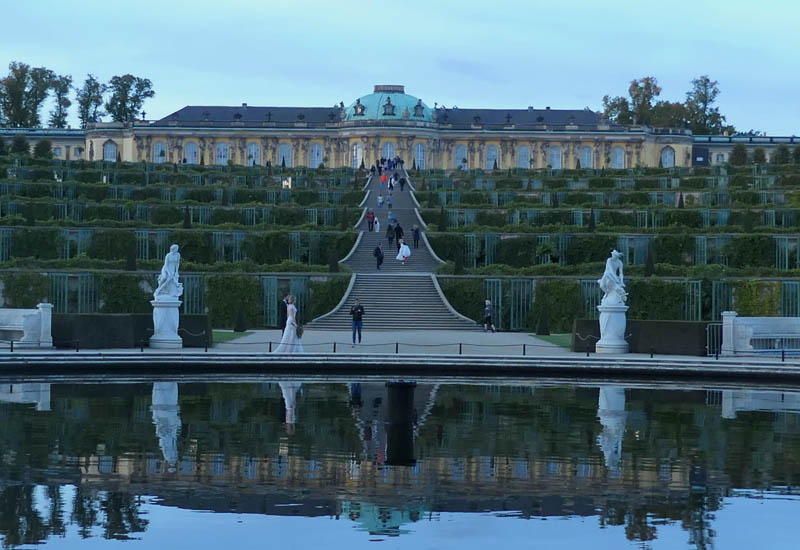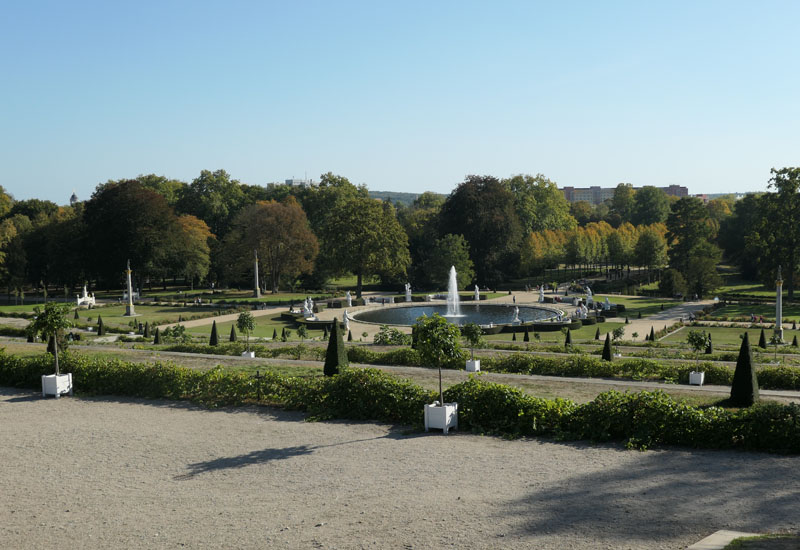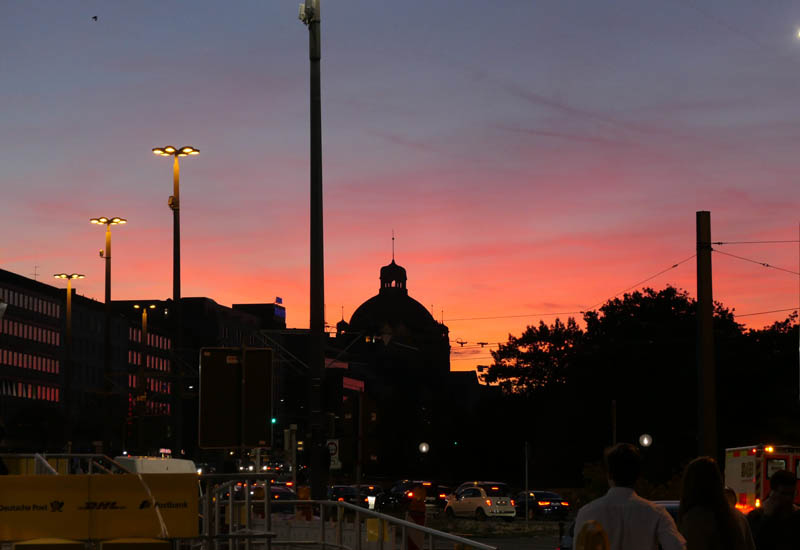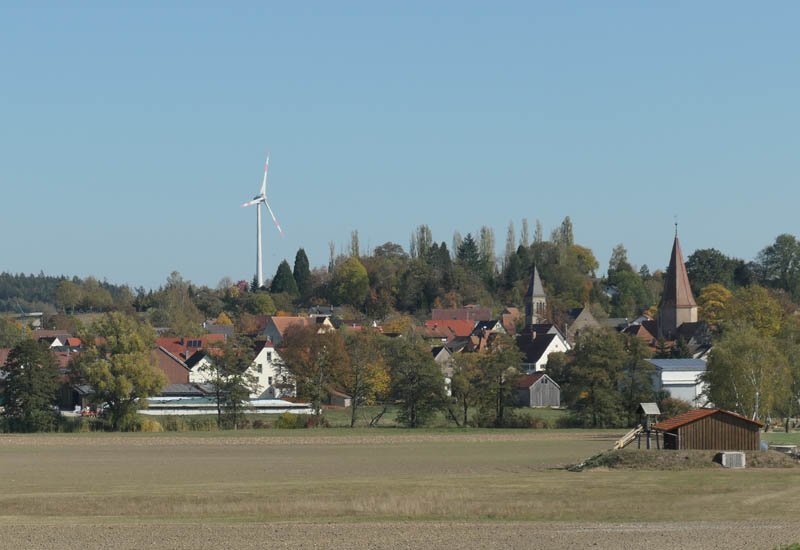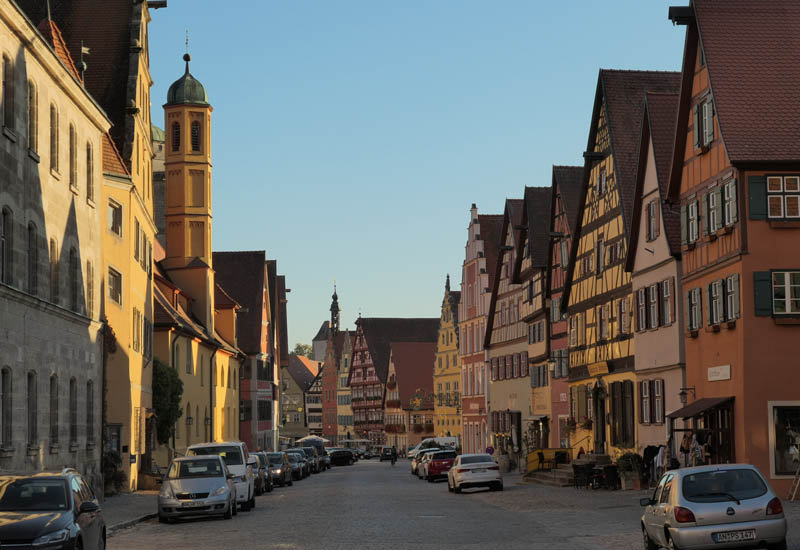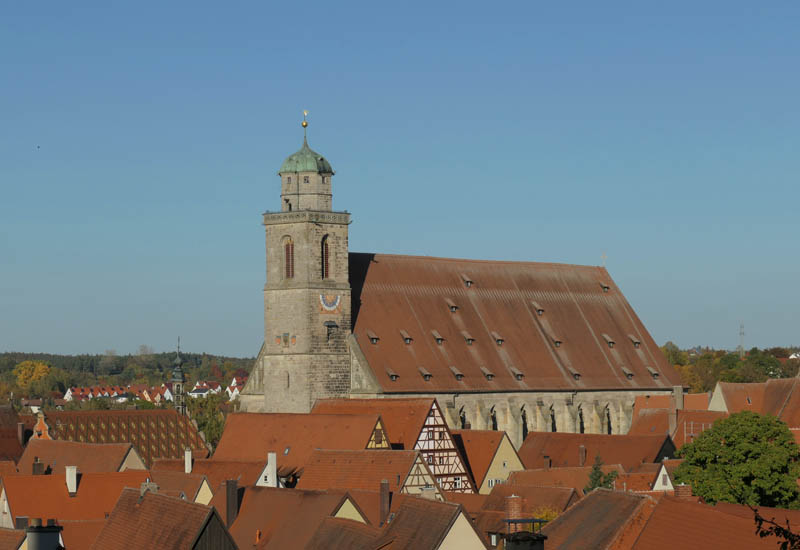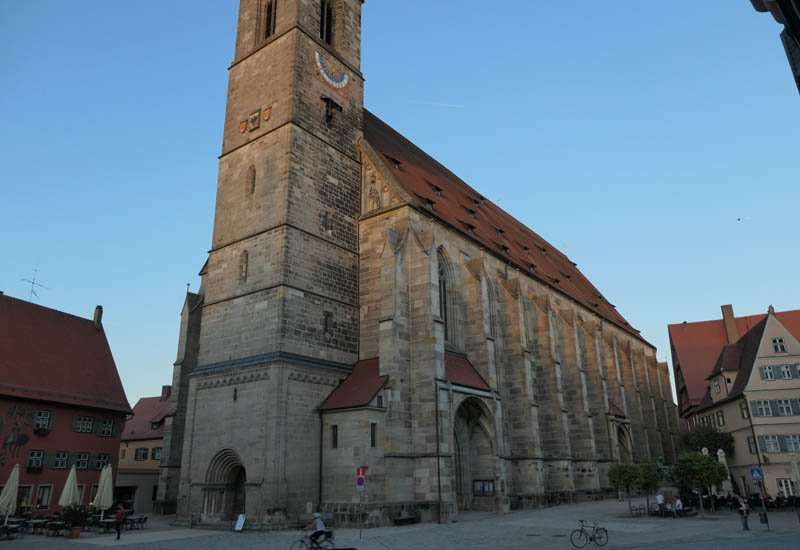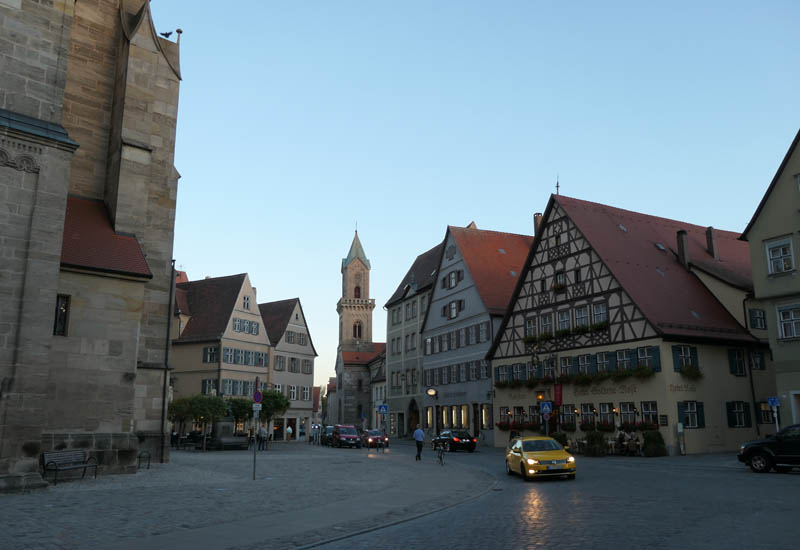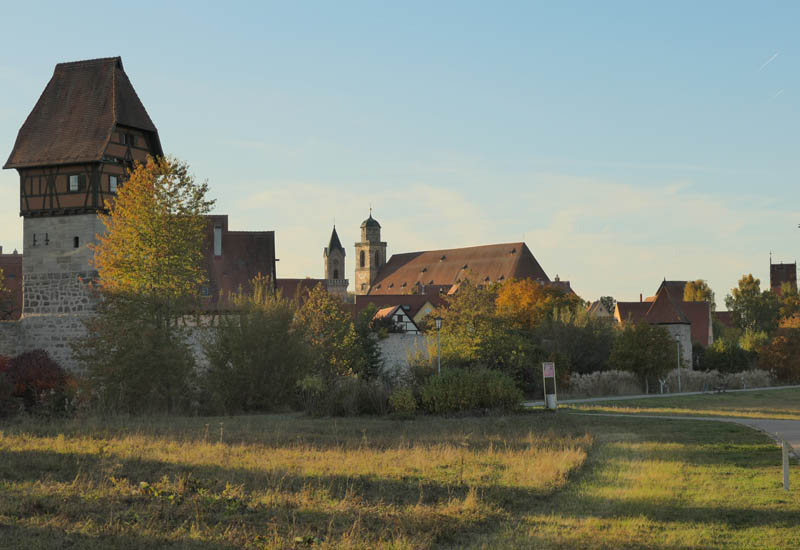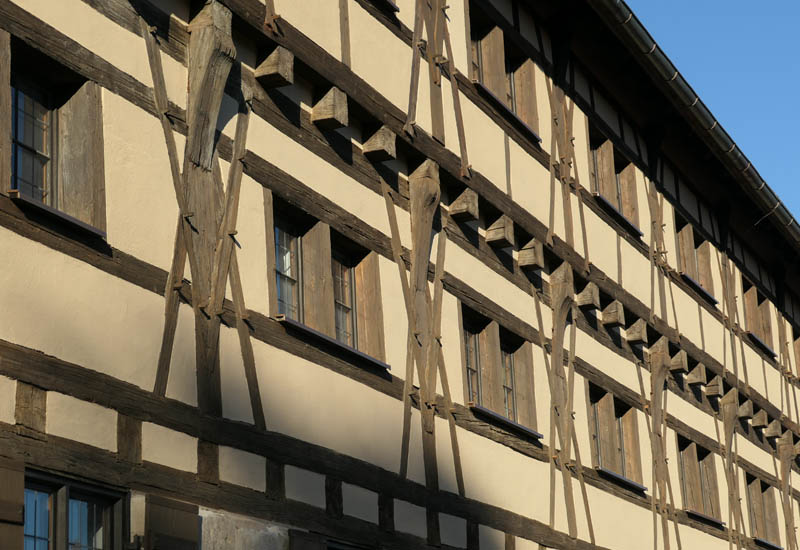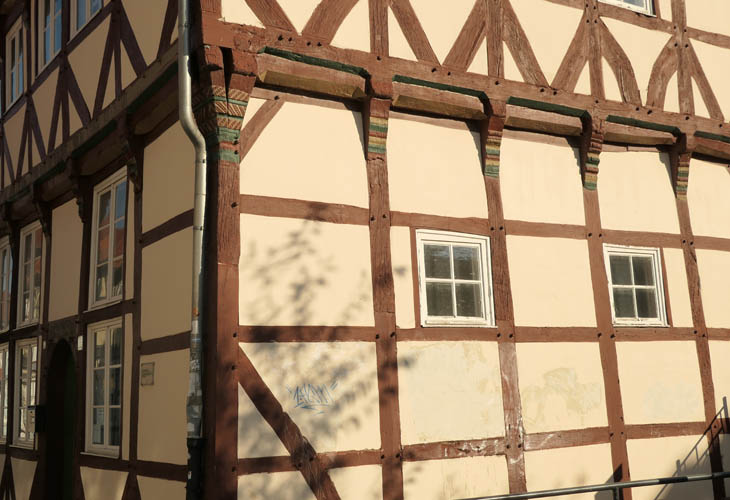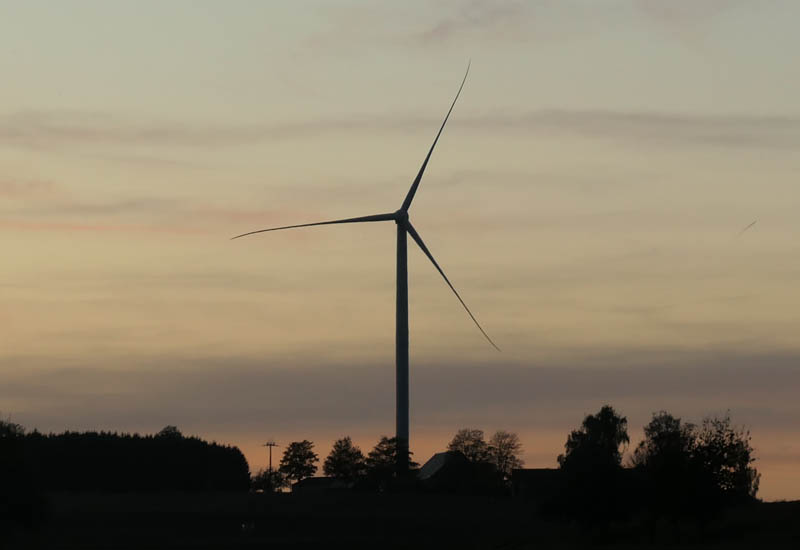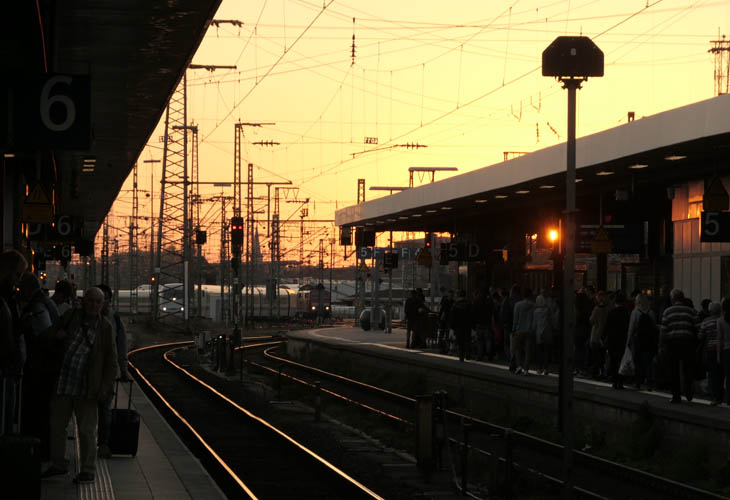Germany Old Villages
Traveling to and from Germany's ecovillages took me through some interesting rural towns and villages. The extensive preservation of these settlements tell us much about the medieval patterns of living. Where life was dominated by agriculture, and by settlements that were inherently walkable, and built for human scale in particular. Some would say that these villages were the last time that humanity lived sustainably. Of course they also tell us a bit about life during times of war.
This is Bad Belzig, about an hour south of Berlin. The two story terrace houses, and narrow streets as one theme, the Berg and manor house in the background. Classically, the medieval village consisted of this troika of village, manor and church, surround by farm land, which was the work of the villagers.
Germans have a fascination with icecream (eis), and even icecream shops are beautiful in a timeless architectural sense. As the summer was to be hot, perhaps unusually so, the attraction wasnt lost on me.
Within the confines of the Belzig Berg or fort, is a tower, something that proved to be a theme of many of these fortified areas. As i understand it from my limited ability to translate the signage, the towers were built both for lookout, but also as a refuge of last resort. They were self contained houses in their own right. Always keen to get some height, i went up the long spiral staircase for a look see.
The view from the top shows quite a bit of new development, but the old town is still visible in the center. Also the church. Red brick turned out to be the dominant building material everywhere i went. Surrounding the town and which rather surprised me is a lot of trees and greenery. In NZ trees are the domain of the hill country, that is, land not otherwise farmable. Here, everything is flat, and the trees just seem to be purely for amenity value.
Consistent with the bikability theme, i often saw these bike/walking signs, which aided those using the network of trails linking the villages in some areas.
This is the church at Spandau. Spandau is an old town, now outlying suburb west of Berlin. The vaulted ceilings were pretty much standard in all the churches i saw, and the engineering involved in those pre-calculator times to support structures of this size just boggle the mind.
There is often a museum in the bergs, and this one had a fine collection of the metal hats the Prussians seemed fond of.
The Spandau fort also has a tower, with its rather impressive wooden staircase.
Which terminates in a fashion poetically suggestive of a journey into the light. For the friend concerned i thought this fitting.
This is Salzwedel, about 2 hours west of Berlin. Its older, and the medieval half timbered influence still visible. There are strict heritage controls, so these buildings are destined to live on, even though many of them are wonky, and of dodgy structural strength. Also visible in this image are some of the newer cobblestone paving, laid in decidely pleasing design that is on one hand random, but also having multiple patterns sweeping through it.
Which has lots of nice streets filled with quaint cottages, quite lovely preserved.
Ditto. Deutche Telecom shop prominent in the foreground. Nice.
The many varieties of this paving style are endlessly fascinating, not just because of its beauty, but the care with which they are laid to resist movement, create permeability, absorbs the rigors of frost heave, tree roots, but bove all you have to admire its infinite recyclability. In many places you could see much older looking granite stones, which has had all in likelihood been relaid to cover modern services, but the stones themselves obviously dating from another century. The foot path grade stones were rough 2 inch cubes, bedded in sand. The road ones were about 5 inch cubes.
Here and there, you cone across war memorials. Even those notionally the aggressor grieve the loss of their young, such is war.
This is the now rather wonky church at Salzwedel. Still in use, and in any other world would be condemned as unsafe. Ah the paradoxes.
At Stendal, the two more or less churches with matching twin spires. Some of these towns are quite intact, while others suffered the loss of as much as 80% of their buildings to bombing during WW2.
This is another old town to the north of Berlin, Templin. It has a fully intact stone wall surrounding the town. These towns achieved independent status, and the inhabitants clearly invested a staggering amount of time to the construction of these fortifications.
Theres a lot of gothic influence in the building design in Templin.
This is a view from the belvedere tower in Potsdam. Churchs seem to come in either pointy, or dome shaped. The one tall hotel building is a DDR nastiness. The locals are fond of blaming all the bad architecture on the east. Of course my the vast majority of my stay was spent in former east germany, but it should be remembered that by in large we are looking at over a 1000 years of history, in which the DDR only existed for a relatively short time, 51 years to be exact.
Same tower, looking west. Palace country. The next few images are also of Potsdam where i spent some weeks staying with friends.
Potsdam's church is a great example of a more modern construction, sometime in the 1800s, and which adopted a range of styles. Bells ring every 6 hours for 5mins at a time. As well as the usual hourly and quarter hourly bells.
Kings and queens being fond of geometry and symmetry, Potsdam has some stunning alignments. The main street through the old town is perfectly aligned with the church at one end...
And the Brandenburger Gate at the other end. And the fountain. I think its aligned east west, and so around the equinox the sun sets through the fountain and gate, making for quite a dramatic effect.
The square there is a regular host to beer festivals and music and what not. We biked past it each day on our way to the lake for a swim, or the biomarkt.
This is the summer palace. While the building is not overly grand, it was just the summer residence after all, the gardens certainly are. Later on they built another palace, a grander one, but by that time the royal influence was on the wane, and it kind of became a university. The terraces are covered in grapes and figs each with protection from the cold. Citrus were put out here each summer, and then moved to a large and rather grand greenhouse called the Orangerie.
Park Sanssouci is the vast park full of palaces, and gardens, and geometric paths.
Ok, moving on. On route to Templehof, this is the sun setting over Nurnberg (Nuremberg). 4 hours on the ICE train, south.
A neighbouring village, this photo taken from at the community of Templehof. Some of these small villages have their own deals with the power communities allowing them to establish microgrids with their own renewables. Quite cool.
There are still some really gorgeous autumn days, on one fo them i bike to the near by town of Dinkelsbuhl, technically in Bavaria. Its one of several small well preserved medieval towns in the area, on teh so called romantic trail. Dinkelsbuhl escaped the war unscathed, and the locals are hell bent on preserving the original character of the old town, its really quite impressive. Although the traffic is kind of scary on the narrow cobbled roads. Bikers in touristy mode beware speeding BMWs.
The church is huge, and there is no suitable place to capture it in its entirety. Built around 1400.
Well i tried.
And tried.
And next to the church is the former market square. Now a cluster of icrecream shops. And tourist mecca.
Part of the intact town wall, and its numerous towers. Riding around the outside, then the inside of the town wall will take much of the day, by the time you stop and look at various buildings.
Some detail fo the half timber design. Some of the timber had been repaired or replaced, some of clearly in original condition. Solid old oak that.
Ditto. Pegs visible and the overhanging design was to get more floor space when you paid for the land by the footprint size.
Biking home on dusk... actually dark.
On the intercity train headed back to Berlin. All good things come to an end. Day 89 of my 90 day visa, time to go to India.
2019-08-29
www.zoneblue.nz/cms/page.php?view=germany-villages
Summary
Photo study villages and towns around Germany.
